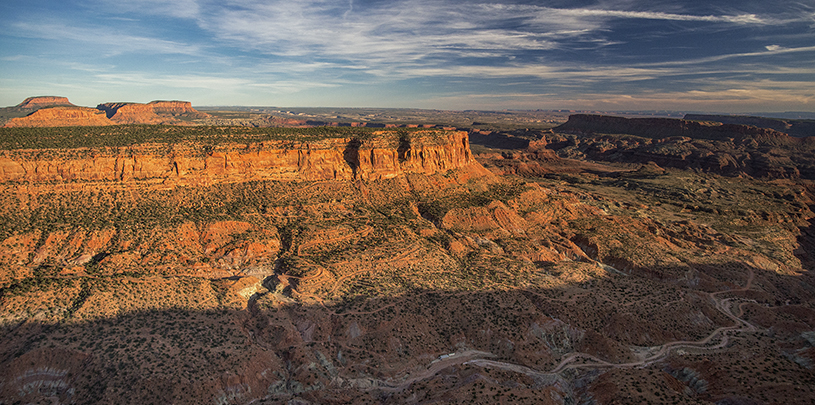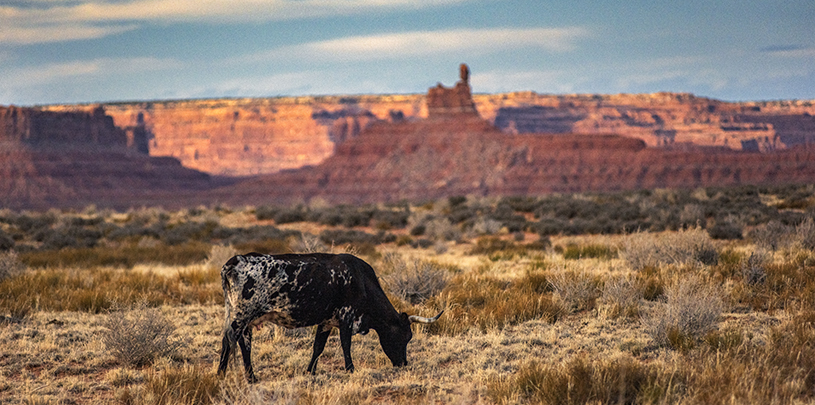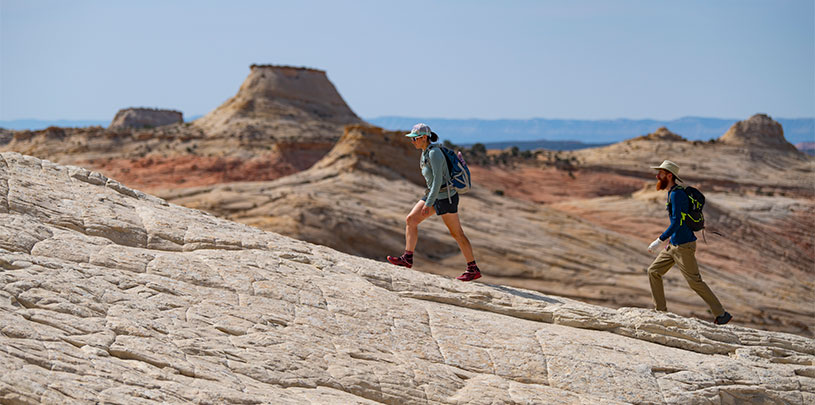
UPDATE: On October 8, 2021, President Biden restored full protections to Bears Ears and Grand Staircase-Escalante national monuments. Send a personal note of thanks to President Biden ›
From vast expanses of red slickrock, to twisty slot canyons and sweeping plateaus, Grand Staircase-Escalante National Monument in southern Utah is teeming with cultural sites, geologic marvels, fragile springs, and diverse plant life and wildlife. On September 18, 1996, the monument was established to protect “some of the most strikingly beautiful and scientifically important unprotected areas in our country.”
In 2017, President Trump attempted to shrink the boundaries of Grand Staircase-Escalante National Monument by nearly 50 percent, breaking the monument into three units and opening up hundreds of thousands of acres to mining, drilling, cattle grazing, and increased off-road vehicle use.
Now, 25 years after the original Grand Staircase-Escalante National Monument declaration, we’re advocating for restored monument boundaries and an updated management plan that truly celebrates its natural and cultural values.
Here are some of our favorite science highlights of the monument:
Dinosaur fossil discoveries
Scientists are uncovering evidence of life on Earth more than 75 million years ago across Grand Staircase-Escalante’s Kaiparowits Plateau, a once hot and swampy forest now hardened into sedimentary rock. The Kaiparowits Plateau is unusually rich with dinosaur fossils that have survived volcanic eruptions and an asteroid collision with the Earth. Recent findings include ceratopsids (horn-faced dinosaurs), hadrosaurs (duck-billed dinosaurs), and multiple tyrannosaurs, which suggest they hunted in packs instead of solo.
Biocrusts are living soils

Look closely at the ground and you’ll see an ancient lifeform. Biological soil crusts are arrays of tiny little organisms that hold the soil together, consisting of cyanobacteria, mosses, and lichens. These pinnacled, blackened crusts found throughout the arid Southwest help protect soils, improve water filtration, and support plant growth. Unfortunately, this hardy biocrust that withstands sun, wind, and rain can be damaged in an instant by the impact of a foot, tire, or hoof. So watch your step next time you’re out exploring!
More bee diversity than the East Coast
There’s a dazzling array of wildflowers in the canyons, cliffs, and desert of Grand Staircase, and the bees know it. Utah and Arizona are each home to over 1,000 species of native bees — more than all the states east of the Mississippi combined. Grand Staircase-Escalante is home to at least 660 species of these hard-working pollinators: red bees, yellow bees, social bees, solitary bees, bees that nest in the ground, and more. There was a lot of “buzz” recently when researchers discovered 49 new species in the monument. However, these small creatures rely on wildflower buffets and are affected by the increased pressure from grazing animals.
Slot canyons and slickrock country

The sculpted landscape we see today began millions of years ago as rock layers built up — limestones, on top of sandstones, on top of shales — only to be eroded by the forces of water, wind, and time. The aptly named monument climbs from the Grand Canyon all the way toward the top of the Aquarius Plateau in steps of red, orange, and white cliffs and terraces. Within the monument, the Escalante River and its tributaries have carved an intricate network of canyons. Whether squeezing through narrow slot canyons, admiring natural arches and bridges, or staring in awe at the colorful cliffs, Grand Staircase-Escalante National Monument brings out the inner geologist in us all.
The beauty of science is that the more you know, the more there is to learn and explore. Whether you’re into birdwatching, hiking, archaeology, or more, grand adventures await you in Grand Staircase-Escalante National Monument.




